

How to Properly Prepare Hogs.
If you’ve seen the news lately, it seems like feral hogs are literally everywhere. Recent stories include the northern-state invasion of cold-adapted “super swine” from Canada as well as the ongoing hogs-gone-wild stories from farms and cities in the south where they bring their ravenous hunger, along with destruction, disease, and sometimes aggressive behavior. Feral hogs are found in at least 35 states, and they number in the millions, so most Americans have a better-than-average chance of sharing geography with them—even if you live in Hawaii – and the animals are projected to continue to invade further up the east and west coasts, further expanding their porcine reach.
If you’ve seen the news lately, it seems like feral hogs are literally everywhere. Recent stories include the northern-state invasion of cold-adapted “super swine” from Canada as well as the ongoing hogs-gone-wild stories from farms and cities in the south where they bring their ravenous hunger, along with destruction, disease, and sometimes aggressive behavior. Feral hogs are found in at least 35 states, and they number in the millions, so most Americans have a better-than-average chance of sharing geography with them—even if you live in Hawaii – and the animals are projected to continue to invade further up the east and west coasts, further expanding their porcine reach.

Feral hogs have thrived in America since the 1500s, shortly after Columbus discovered the New World. What began as a free-range, easy-to-maintain food source evolved over the centuries into a full-blown catastrophe unfolding in slow motion. Pigs are hearty and adaptable, so they can survive in almost any climate, making their fatality rate extremely low. Because sows can have piglets by six months of age and produce up to three litters of as many as ten piglets per litter, per year, their numbers have grown exponentially. The escape artists that didn’t end up on a dinner plate centuries ago created the issue we have today, with no real way to keep their numbers in check until now. At the rate they are reproducing now, if 65-70% of the population aren’t dispatched each year, their numbers (and geography they inhabit) will continue to grow.
Feral hogs have thrived in America since the 1500s, shortly after Columbus discovered the New World. What began as a free-range, easy-to-maintain food source evolved over the centuries into a full-blown catastrophe unfolding in slow motion. Pigs are hearty and adaptable, so they can survive in almost any climate, making their fatality rate extremely low. Because sows can have piglets by six months of age and produce up to three litters of as many as ten piglets per litter, per year, their numbers have grown exponentially. The escape artists that didn’t end up on a dinner plate centuries ago created the issue we have today, with no real way to keep their numbers in check until now. At the rate they are reproducing now, if 65-70% of the population aren’t dispatched each year, their numbers (and geography they inhabit) will continue to grow.
With an estimated $2.5 billion in damages caused each year by the free-ranging swine, there is a real need to find ways to mitigate the negative effects they have on everything they touch. Texas is home to about 40% of all wild boars, so the Lone Star state has declared total war on feral pigs by using traps, hunters, poison, helicopters, and even hot-air balloons to try to control their numbers. Currently, that only accounts for about half of the required efforts to slow down pig population growth. But with a problem this size also comes opportunity; namely, meat, which ironically was why the animal was brought to America so long ago. Though hog hunting can realistically only reduce a small percentage of the overall population, getting people to try eating some of the invaders could help bring more awareness to the issue. After all, a feral pig shares the same DNA as its domesticated cousins, which means it tastes just as good.
With an estimated $2.5 billion in damages caused each year by the free-ranging swine, there is a real need to find ways to mitigate the negative effects they have on everything they touch. Texas is home to about 40% of all wild boars, so the Lone Star state has declared total war on feral pigs by using traps, hunters, poison, helicopters, and even hot-air balloons to try to control their numbers. Currently, that only accounts for about half of the required efforts to slow down pig population growth. But with a problem this size also comes opportunity; namely, meat, which ironically was why the animal was brought to America so long ago. Though hog hunting can realistically only reduce a small percentage of the overall population, getting people to try eating some of the invaders could help bring more awareness to the issue. After all, a feral pig shares the same DNA as its domesticated cousins, which means it tastes just as good.

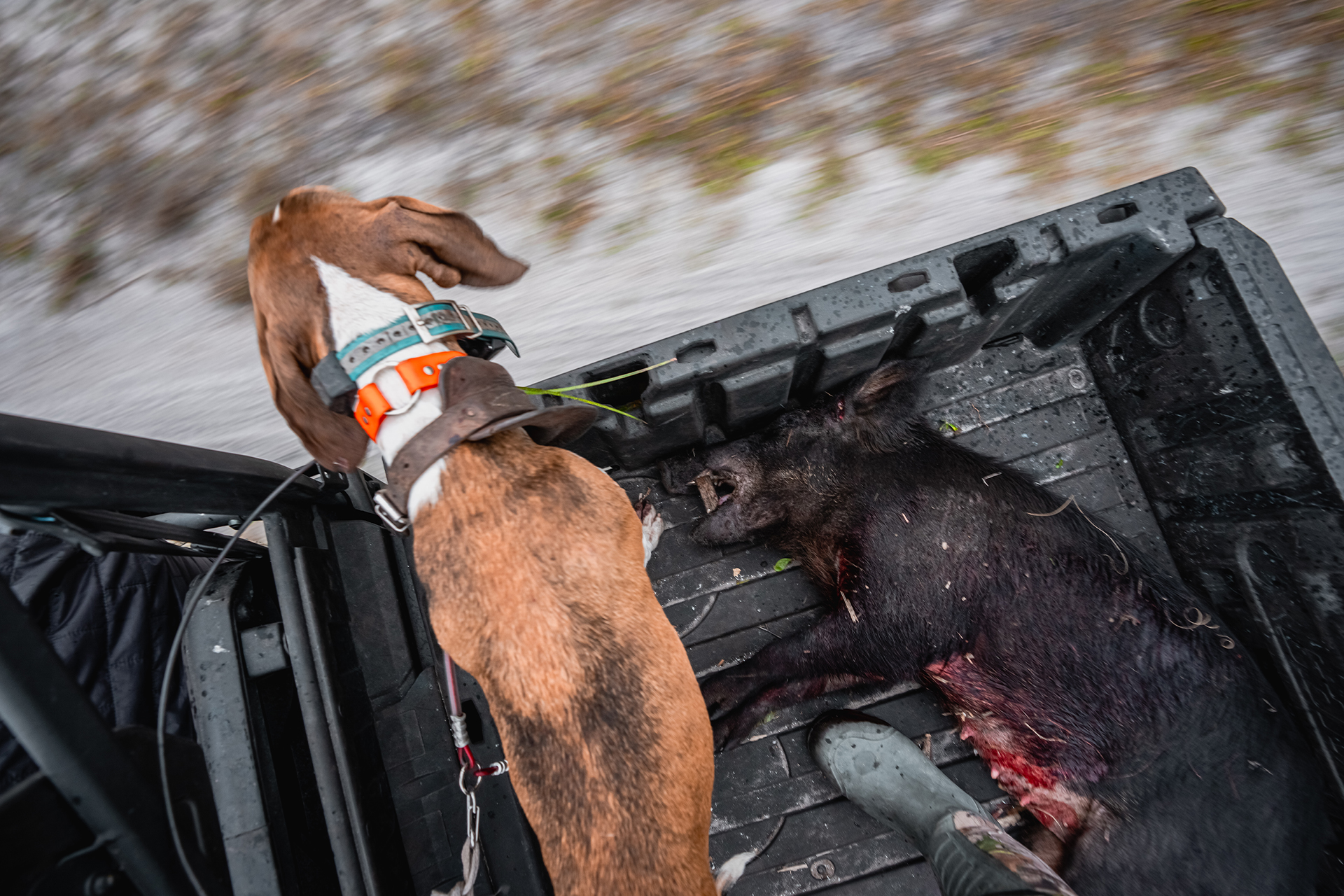
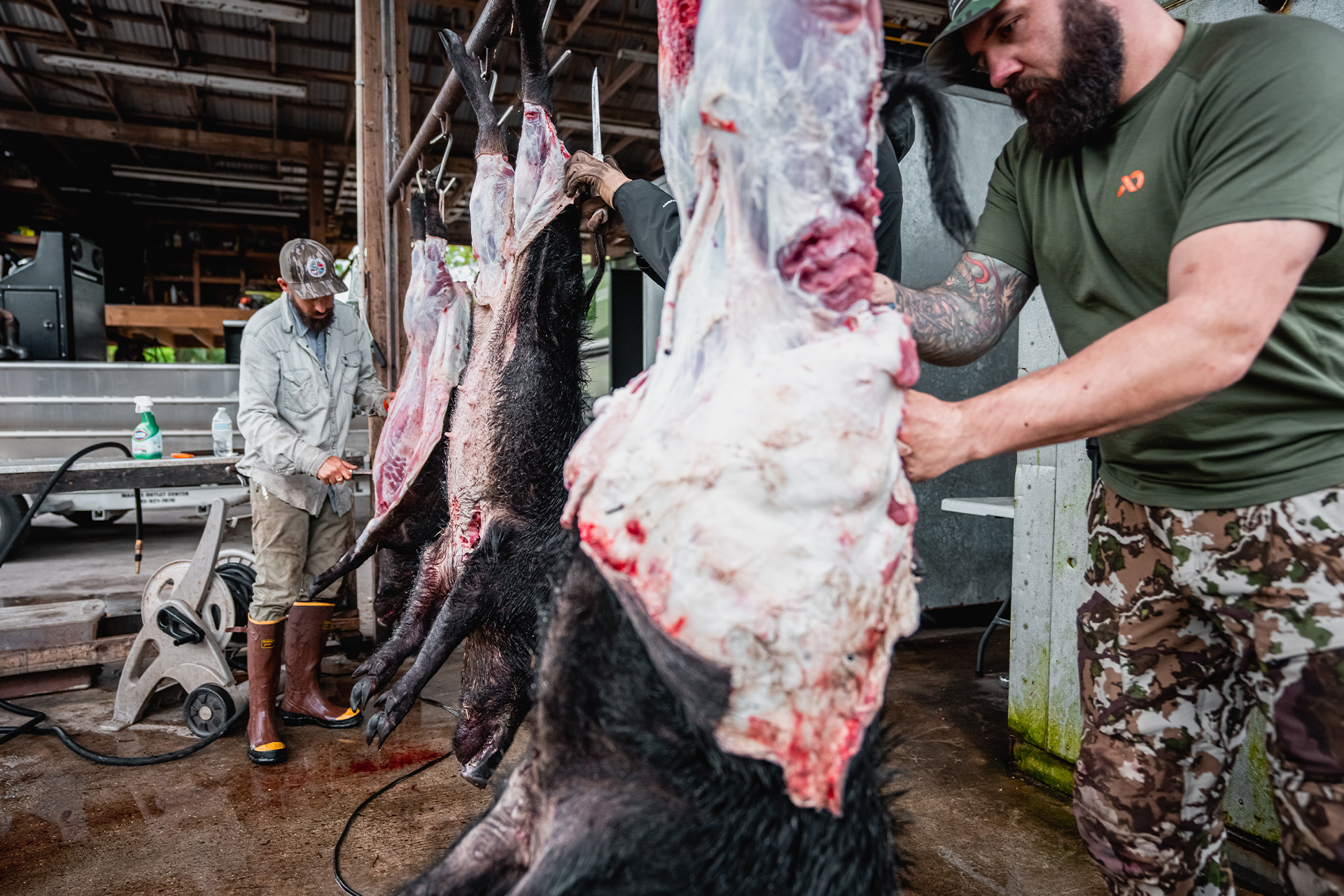
While wild hogs are a great source of organic, lean protein, many people balk at the idea of eating them. First, there’s that smell. There’s also a slurry of diseases they carry, such as toxoplasmosis, brucellosis, trichinellosis, and salmonella—to name a few—that require careful handling and proper preparation to avoid. However, as those who do hunt and eat wild pigs will tell you, there are many, many ways to make a great meal out of a wild boar. It all comes down to following the correct techniques of hunting, dressing, and preparing your hog. With the same discipline a hunter would show toward a deer or other big-game animal, there are hundreds of ways to turn this destructive pest into a delicacy.
While wild hogs are a great source of organic, lean protein, many people balk at the idea of eating them. First, there’s that smell. There’s also a slurry of diseases they carry, such as toxoplasmosis, brucellosis, trichinellosis, and salmonella—to name a few—that require careful handling and proper preparation to avoid. However, as those who do hunt and eat wild pigs will tell you, there are many, many ways to make a great meal out of a wild boar. It all comes down to following the correct techniques of hunting, dressing, and preparing your hog. With the same discipline a hunter would show toward a deer or other big-game animal, there are hundreds of ways to turn this destructive pest into a delicacy.
To really get a professional’s perspective on taking and preparing feral hogs, we linked up with one of the best restaurateurs in Austin, Jesse Griffiths. A Texas native, Jesse was born and raised in Denton and, since he was sixteen, he’s been in the restaurant business. He’s since combined his love of cooking with his love of hunting as the chef and co-owner of Dai Due and The New School of Traditional Cookery, which he opened in 2006. Not only is Jesse considered one of the best chefs in Texas—if not the entire United States—he’s also documented his hunting and culinary exploits in written prose that educates the reader and provides amazing the recipes right out of the Thomas Jefferson school of food preparation. In 2012, he Afield: A Chef’s Guide to Preparing and Cooking Wild Game and Fish, which was nominated for a James Beard award. In it, he includes recipes for nearly every type of game and fish in Texas, as well as how to best prepare each type of meat.
To really get a professional’s perspective on taking and preparing feral hogs, we linked up with one of the best restaurateurs in Austin, Jesse Griffiths. A Texas native, Jesse was born and raised in Denton and, since he was sixteen, he’s been in the restaurant business. He’s since combined his love of cooking with his love of hunting as the chef and co-owner of Dai Due and The New School of Traditional Cookery, which he opened in 2006. Not only is Jesse considered one of the best chefs in Texas—if not the entire United States—he’s also documented his hunting and culinary exploits in written prose that educates the reader and provides amazing the recipes right out of the Thomas Jefferson school of food preparation. In 2012, he Afield: A Chef’s Guide to Preparing and Cooking Wild Game and Fish, which was nominated for a James Beard award. In it, he includes recipes for nearly every type of game and fish in Texas, as well as how to best prepare each type of meat.

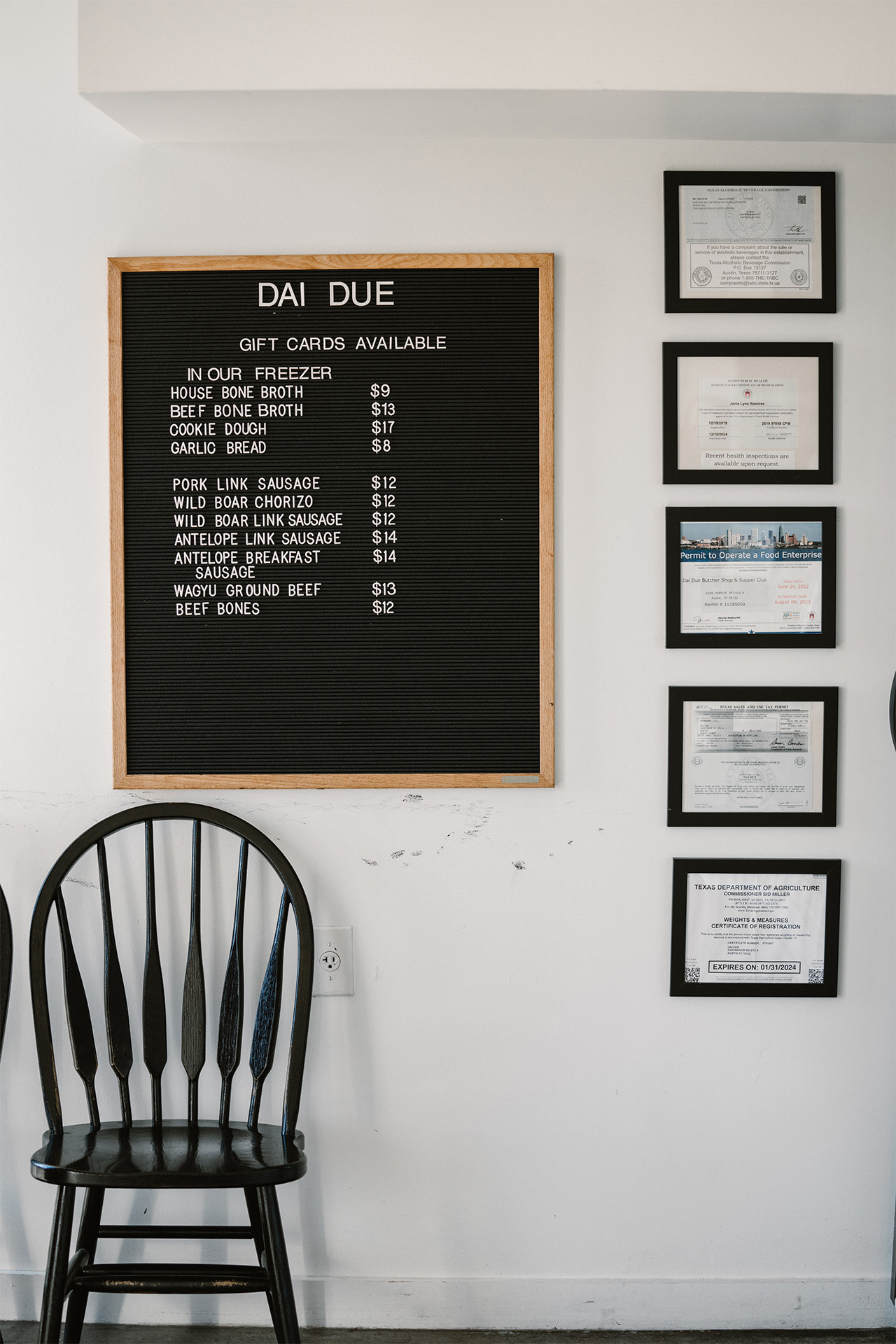
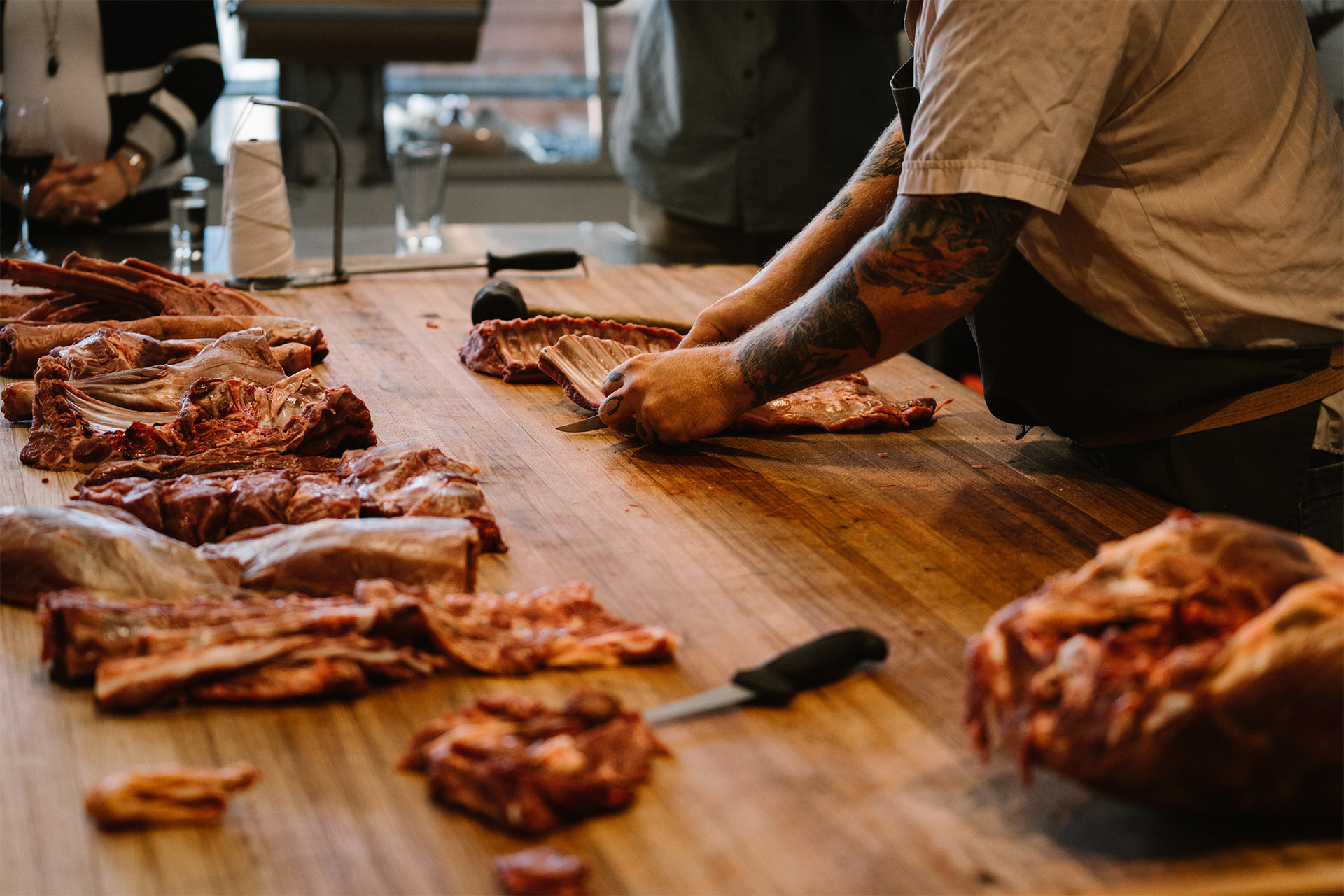
In 2022, he focused the to the plentiful feral pigs in Texas and penned The Hog Book, winning the James Beard award for a single subject book in the process. Here, Jesse walks readers through the life of a feral pig, preparing to hunt one, and taking the shot. Next is field dressing, butchering, and preparing the hog in a multitude of ways . Not only does he cover the overall process of preparing wild pork from start to finish, but he provides about 180 recipes for wild-hog meat (and a few other farm-to-table treats). In short, if anyone knows how to turn the roughest of game meat into the finest table fare, it’s Jesse.
In 2022, he focused the to the plentiful feral pigs in Texas and penned The Hog Book, winning the James Beard award for a single subject book in the process. Here, Jesse walks readers through the life of a feral pig, preparing to hunt one, and taking the shot. Next is field dressing, butchering, and preparing the hog in a multitude of ways . Not only does he cover the overall process of preparing wild pork from start to finish, but he provides about 180 recipes for wild-hog meat (and a few other farm-to-table treats). In short, if anyone knows how to turn the roughest of game meat into the finest table fare, it’s Jesse.
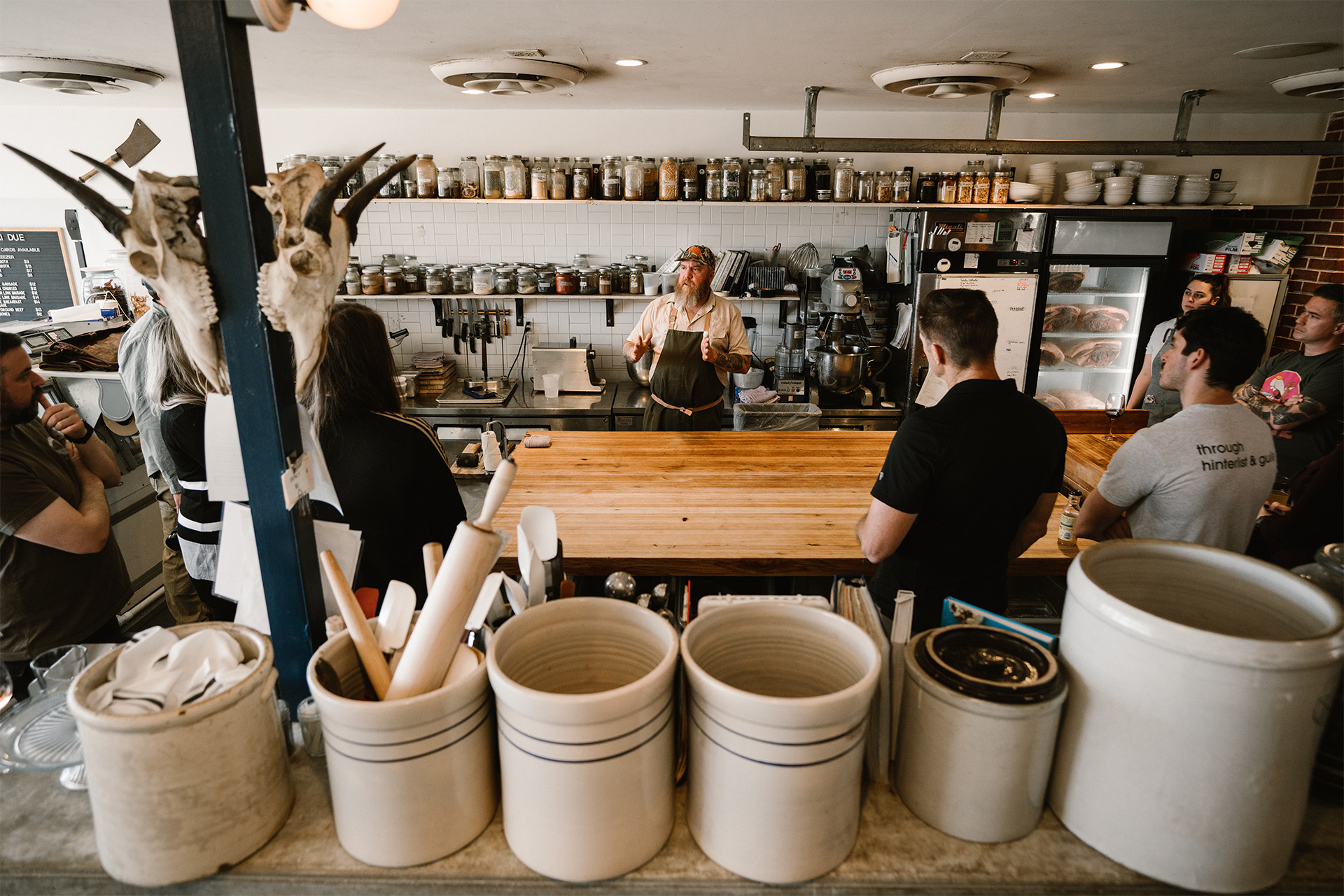
With a knowledge base and skillsets like his, we’d would be hard pressed to find a better teacher, which is why in 2008, Jesse started a school to teach meat processing – based right out of his restaurant. We had the great fortune to participate in a meat-processing class, learning how to turn feral swine into something amazing. This was followed by a seemingly endless and incredibly delicious meal made from a handful of Jesse’s recipes. This was a bucket list class with an even bucket list-ier menu.
With a knowledge base and skillsets like his, we’d would be hard pressed to find a better teacher, which is why in 2008, Jesse started a school to teach meat processing – based right out of his restaurant. We had the great fortune to participate in a meat-processing class, learning how to turn feral swine into something amazing. This was followed by a seemingly endless and incredibly delicious meal made from a handful of Jesse’s recipes. This was a bucket list class with an even bucket list-ier menu.
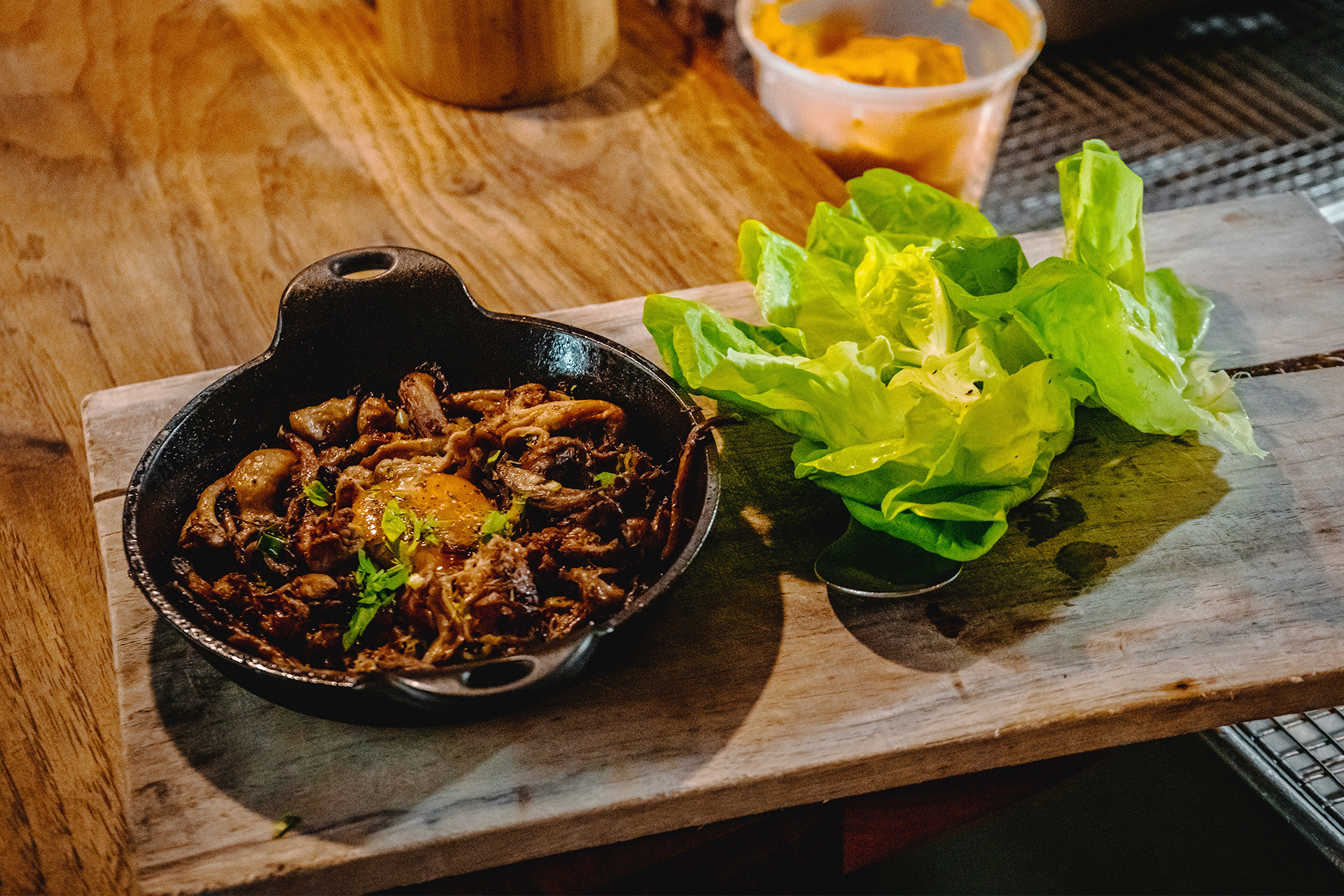


Jesse’s renaissance-man skills are clearly not just limited to working with wild pork. He’s just released The Turkey Book in time for the 2024 turkey hunting season, covering the ins and outs of hunting the cagey and coy wild turkey – and then cooking it to perfection in a series of amazing recipes that make home-cooking look and taste like a Michelin Star (even if they don’t have those here in Texas). It’s another interesting read by a great American (er, Texas) writer who has the skills to tell a great story about the story behind the hunt, and then follow it up with how to make one of best meals you’ll ever eat.
That said, we’re doing our part to address the feral pig problem and the average food problem by hunting feral pigs whenever we can while taking inspiration from Jesse on how to turn them into a culinary masterpiece afterward.
Jesse’s renaissance-man skills are clearly not just limited to working with wild pork. He’s just released The Turkey Book in time for the 2024 turkey hunting season, covering the ins and outs of hunting the cagey and coy wild turkey – and then cooking it to perfection in a series of amazing recipes that make home-cooking look and taste like a Michelin Star (even if they don’t have those here in Texas). It’s another interesting read by a great American (er, Texas) writer who has the skills to tell a great story about the story behind the hunt, and then follow it up with how to make one of best meals you’ll ever eat.
That said, we’re doing our part to address the feral pig problem and the average food problem by hunting feral pigs whenever we can while taking inspiration from Jesse on how to turn them into a culinary masterpiece afterward.
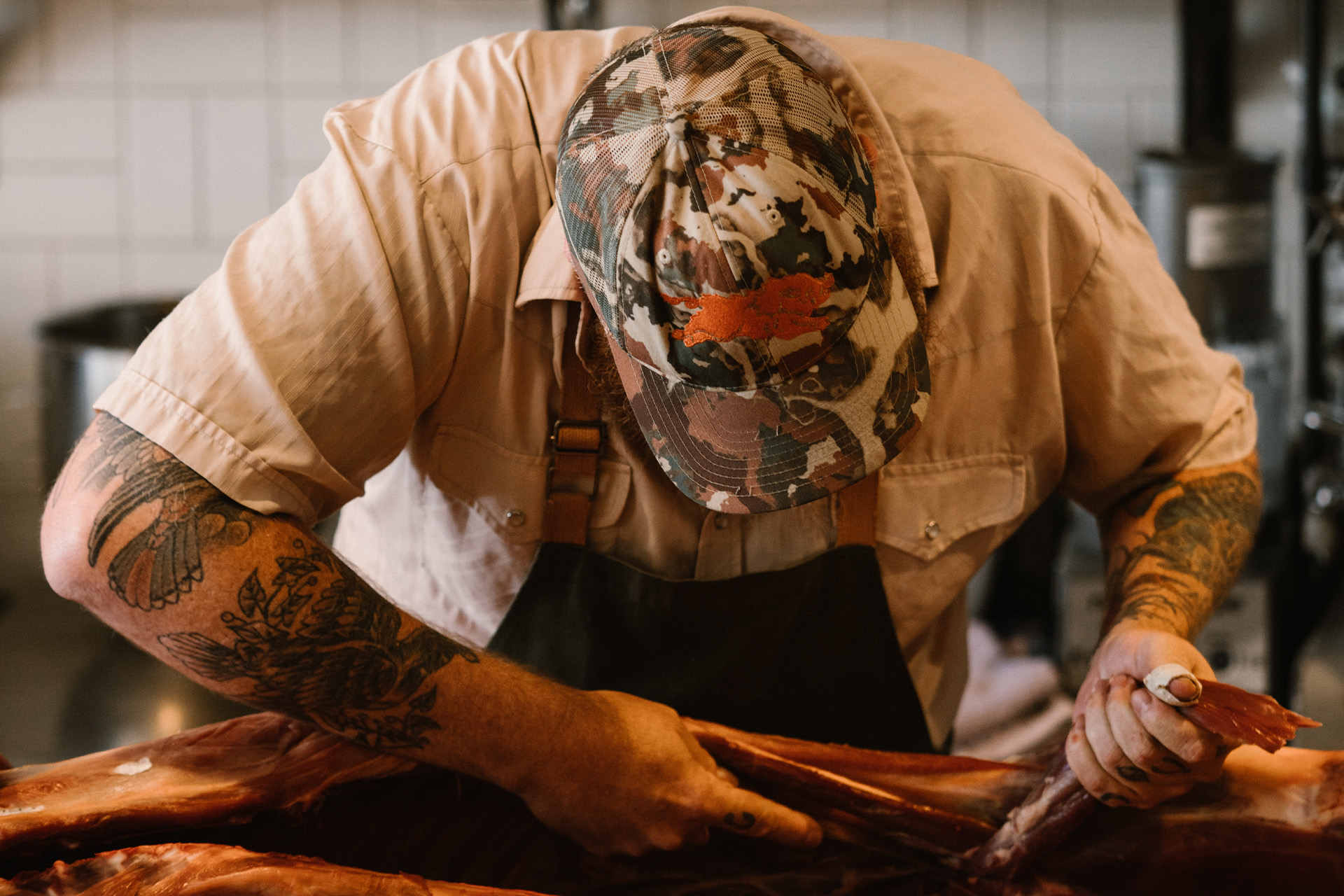





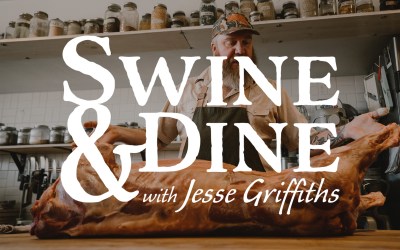

Texas is overrun with feral hogs and they cause billions of dollars in damage every year. There are few opportunities for people without deer leases or similar to actually go hunting, because there is very little public land in Texas. You’ll have to obtain permission from land owners to go and hunt. Typically, this entails paying for the privilege of hunting for an unwanted, destructive, invasive pest. Basically, to hunt in Texas, you’re organizing a Safari in your home state, and the expenses can be considerable. Small wonder the state is overrun with feral hogs. The property hunters can’t get a fraction of them. And so the state contemplates all sorts of interventions, including poisoning them and so on.
I’m a fan of Jesse Griffiths, and the Hog Book he wrote is beautiful, informative, and the recipes are wonderful. I’ll look forward to checking out some of the recommendations from this online article.